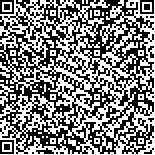| 摘要: |
| [摘要] 目的 分析宫腔镜冷刀技术在日间手术中的应用效果。方法 回顾性分析2020年7月20日至2022年12月31日在该院宫腔镜门诊就诊并接受宫腔镜冷刀手术2 159例宫内良性疾病患者的临床资料。分析其手术时间、术后出血量、一次性手术成功率、手术并发症、术后妊娠率等。结果 宫腔镜冷刀手术治疗2 159例宫内良性疾病,一次性手术成功率为99.86%(2 156/2 159),术后出血量0~10 ml,手术并发症5例(1例子宫黏膜下肌瘤剔除术后宫腔轻度粘连,1例子宫纵隔术后轻度水中毒,1例子宫纵隔术后1周出现术后大出血,1例宫腔重度粘连术中子宫穿孔,1例绝经期宫内节育环嵌顿宫腔镜下取环致子宫穿孔,均经积极治疗后治愈)。随访80例有生育需求的中、重度宫腔粘连患者,术后妊娠率为47.50%(38/80)。结论 在一定适应证范围内,冷刀技术可以取代传统的宫腔电切手术治疗大部分宫内良性疾病。冷刀技术具有学习曲线短,一次性手术成功率高,并发症发生率低,无电、热损伤,可更好地保护子宫内膜,保护女性的生育能力等优势,尤其适合在日间手术室开展。 |
| 关键词: 冷刀技术 宫腔镜日间手术 宫内良性疾病 |
| DOI:10.3969/j.issn.1674-3806.2023.02.02 |
| 分类号:R 713.4 |
| 基金项目:广西卫生健康委科研课题(编号:Z20210493) |
|
| Analysis on the application effect of hysteroscopic cold knife technique in day surgery |
|
LING Dan, ZHAO Ren-feng, LAI Li-kun, et al.
|
|
Department of Gynecology, the People′s Hospital of Guangxi Zhuang Autonomous Region, Nanning 530021, China
|
| Abstract: |
| [Abstract] Objective To analyze the application effect of hysteroscopic cold knife technique in day surgery. Methods The clinical data of 2 159 patients with benign intrauterine diseases who were treated by hysteroscopic cold knife surgery in the Hysteroscopy Clinic of the People′s Hospital of Guangxi Zhuang Autonomous Region from July 20, 2020 to December 31, 2022 were retrospectively analyzed. The operation time, postoperative blood loss, one-time operation success rate, operation complications and pregnancy rate after operation were analyzed. Results The 2 159 patients with benign intrauterine diseases were treated with hysteroscopic cold knife surgery, and the one-time operation success rate was 99.86%(2 156/2 159), and the postoperative blood loss was 0-10 ml. The postoperative complications occurred in 5 cases(including 1 case of uterine cavity mild adhesion after submucous myomectomy, 1 case of mild water intoxication after uterine mediastinal surgery, 1 case of postoperative massive bleeding one week after uterine mediastinal surgery, 1 case of uterine perforation during the operation of severe intrauterine adhesion, 1 case of uterine perforation caused by intrauterine device incarceration and removal of intrauterine device under hysteroscope. After aggressive treatment, all the patients were cured). Among the 2 159 patients, 80 patients with moderate to severe intrauterine adhesions who had fertility needs were follwed up, and the pregnancy rate was 47.50%(38/80). Conclusion Within a certain range of indications, the cold knife technique can replace the traditional electrosurgical treatment of intrauterine benign diseases. The cold knife technique has the advantages of short learning curve, high success rate of one-time operation, low rate of complications, no electricity and heat damage, better protection of endometrium and female fertility, and is especially suitable for daytime operation. |
Key words: Cold knife technique Hysteroscopic day surgery Benign intrauterine diseases
*共同第一作者 |

